New and unprecedented collaboration with the Louvre Museum. Having brought to life the evolution of the architecture of the Louvre Palace across the ages, the Salle des Verres is now open.
Telling the story of the Louvre in the Renaissance, the Salle des Verres recounts the royal establishment of the old Palais during the Valois dynasty.
A new-generation model – equipped with a “sensitive” console – and a sensory station offer the chance to immerse yourself in the heart of the old palace during the reign of Henri II.
An architectural model to explain the functions and uses of the former royal apartments
The model aims to plunge visitors into the everyday life of Henri II, thanks to the reconstruction of various rooms of the former palace.
This device marries digital technologies and the ingenuity of craftworkers to allow the curious visitor to explore the royal apartments – in the closest detail.
The royal chamber and its luxurious ornaments, the caryatid room with its magnificent court, and decorations such as tapestries and period furniture have been reproduced meticulously.
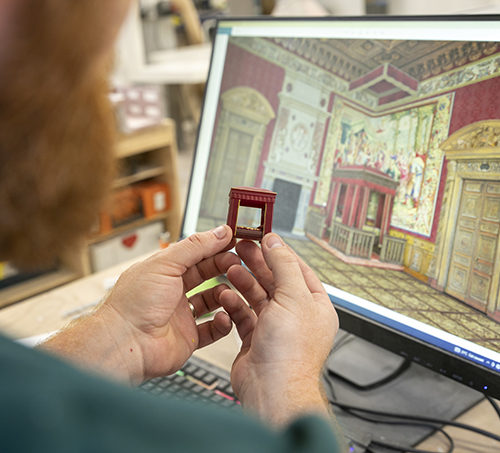
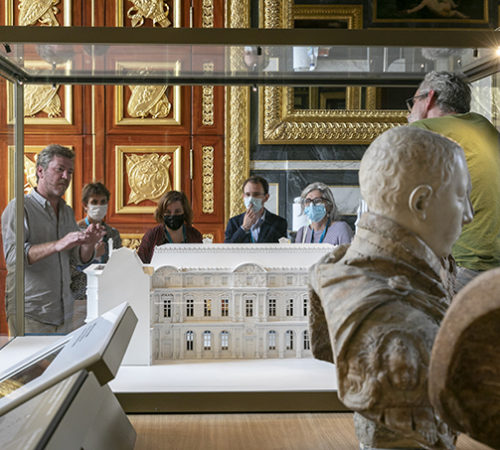
Presented in shell form, the model also shows the facades, and outside spaces of the palais.
This extremely meticulous work required expertise in several fields. Historians and facilitators from the Louvre, designers from Tactile Studio and makers from the ‘Atelier WAM‘ worked together to recreate the atmosphere of the Louvre in the 16th century.
A “sensitive” console to intensify interaction in exploring the old palace
Placed in front of the model and integrated with it, the “sensitive” console allows visitors to interact with the different rooms of the palace by an interactive lighting system.
Its four objectives are to inform, to contextualise, to allow interaction and to enable visitors to locate themselves in the palace.
The console takes the form of a mediation station. It comprises explanatory texts as well as pictograms for each room.
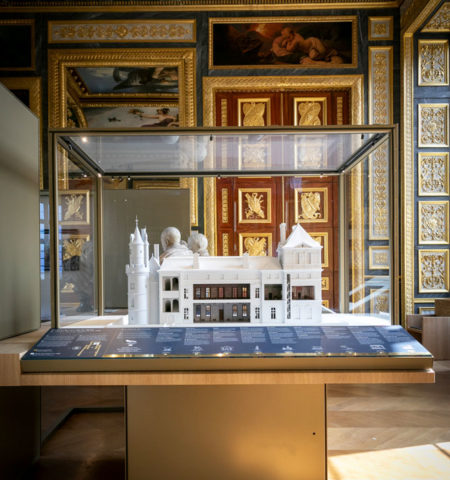
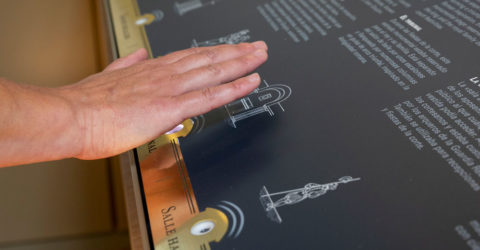
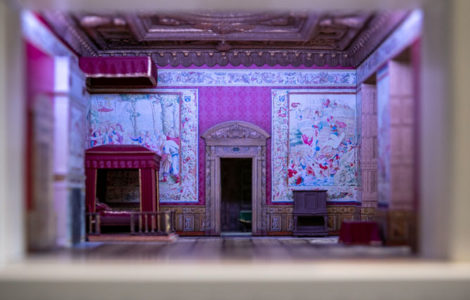
Below each pictogram there is an infrared sensor:
The visitor is invited to pass their hand over the sensors to light up the model of the corresponding room.
A sensory station to make a work of a Renaissance palace accessible to all
The museum teams wanted all visitors to be able to explore a decorative feature of the rooms of the 16th century, through tactile and sonic exploration.
The sensory station is located right next to the original work and is organised in three parts.
The first is a tactile orientation map that enables visitors to find their position in the Salle des Verres as well as the location of the work at the time of Henri II. The second part of the station invites the visitor to discover the entirety of this decorative feature: it is a warrior’s helmet in the Greco-Roman style, produced in bas-relief.
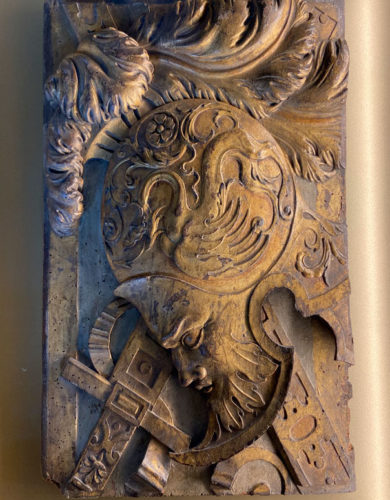
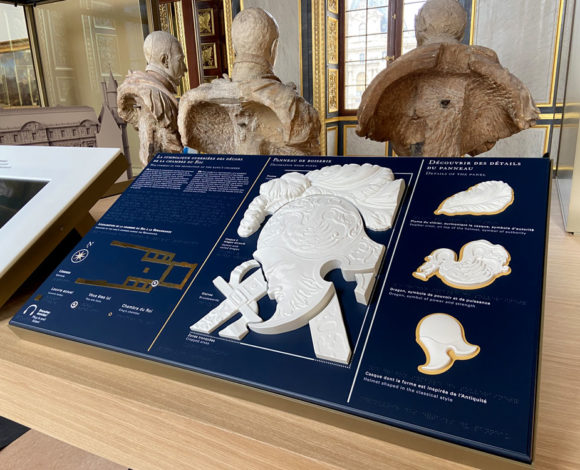
Lastly, the third part details two iconographic elements on the helmet. Furthermore, a simplified silhouette of this enables the inquisitive visitor to understand its form and shape.
An audio device is also available to help the visitor in their exploration. And to complete it all? The whole station contains texts in Braille for even more inclusiveness.
Tactile Studio is extremely proud to have contributed for over 11 years alongside the team at the Louvre to the popular appreciation of this unique heritage.
Client: Musée du Louvre
![]()
Production: Atelier WAM
